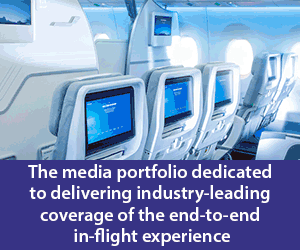
“Sensehacking: Passenger Wellbeing in the Air” by Professor Charles Spence of the Crossmodal Research Laboratory at the University of Oxford reveals how intelligent stimulation of passenger senses could optimise in-flight wellbeing.
This includes minimising noise levels to more appropriate lighting, and even accompanying food with music to bring out flavour.
According to the report, the concept of comfort is a “multi-sensory construct” that is influenced by a wide range of factors such as noise, vibration, ergonomics, legroom (or lack of it), and even the characteristics of the passengers themselves.
The report was created for the World Travel Catering and Onboard Services Expo (WTCE). The post-pandemic focus on customer wellbeing is nowhere more obvious than whilst travelling and while constant disinfecting and face masks are thankfully a thing of the past, airlines are now shifting their attention to other means of enhancing passenger inflight wellbeing via ‘sensehacking’ – using sensory stimulation to help improve social, cognitive, and emotional wellbeing during journeys.
“In understanding that something needs to be done to manage the stress increasingly associated with air-travel, it may be helpful to consider key in-flight passenger activities: eating and drinking, and, on longer flights, sleeping, and how the multisensory atmosphere on board most planes is simply not conducive to these activities, given the range of physical, physiological and psychological considerations,” the report says.
In addition, the report points to the potential of Biophilia, which is the connection of the built environment to direct and indirect nature, in helping to soothe passengers, and thermal comfort which is cited as “another tricky issue”, given that men and women usually prefer different ambient temperatures.
The report also highlights that potentially both aircraft noise and visual cues can be used to modulate comfort levels.
Food and drink could also play a more high-profile role in passenger comfort, suggests Prof. Spence’s report: “There appears to be increasing awareness of, and interest in, eating in the air as a means of supporting wellbeing…It’s a fact that food and drink tastes different in the air, but it’s also likely that passengers’ low expectations also play a role. Put differently, airline food likely isn’t always satisfactory because passengers don’t expect it to be.”
Prof Spence says: “The airline and airport industries clearly understand the need for stress-soothing service strategies and that the multisensory atmosphere while flying is not conducive to promoting inflight passenger wellbeing. However, despite this understanding, none of the airlines currently appear to own what might be described as the ‘wellbeing in the skies’ space.
WTCE Event Director, Polly Magraw comments: “This report certainly gives airlines plenty to think about, with innovative suggestions around novel ways of making flying more enjoyable for passengers. Of course, carriers already care deeply about passenger safety, but adding in a new wellbeing aspect could completely elevate the flying experience. While not all airlines could adopt all measures, drawing on some of them – particularly for long-haul flights – could be an industry game-changer.”
The full Sensehacking paper and research references are available at https://www.worldtravelcateringexpo.com/en-gb/lp/wellbeing-in-the-air-report.html





